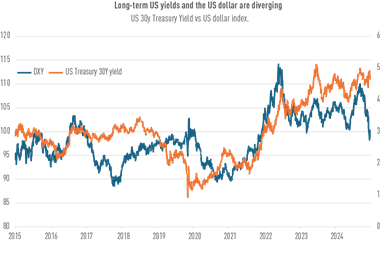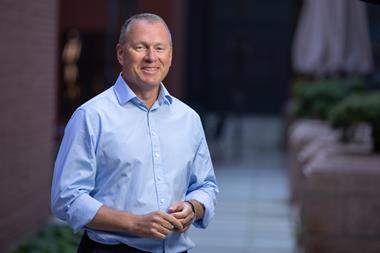Dai Xianglong, chairman of China’s National Council for Social Security Fund (NSSF) was a keynote speaker at the Pacific Pension Institute’s 2009 Asian Pension Fund Roundtable in Bangkok. Chairman Dai says the assets of the NSSF are expected to exceed 1 trillion RMB (approx. $150bn) within two years. He believes a portfolio of that size should not be managed by civil servants, but a team of experienced investment professionals. As such, it will be necessary to set up a professional investment management company.
On the subject of the NSSF investment policy, Dai said, “Although we continue to be very prudent in the management of our funds, it was inevitable and understandable that against the backdrop of the financial crisis, pension funds would incur losses. It is important for us to draw some lessons from this crisis. While each individual pension fund may have its own particular lessons to draw, there are certain lessons we all share in common.
“Lesson one is that some pension funds relied too heavily on stocks. I think it is very dangerous to allocate up to 50-60% of a fund’s investment in the stock market. That is too high. Lesson two is that pension funds may have not been careful enough in the selection and supervision of external fund managers. We have learned that we should choose managers who are focused on the long-term rather than those who seek very high returns over the short-run.
“Lesson three is that those of us who manage pension funds must continue to work even after we have given mandates to external managers. That is to say that we should continue to closely follow developments in the markets, the economy, and the capital markets – and adjust accordingly.
“As for the NSSF’s overall asset mix, we have about 48% invested in fixed income products; 29% in securities or stocks, both at home and abroad; and less than 20% in the equities of non-listed enterprises such as private equity funds. About 5% is invested in cash and cash-equivalents. Over the past nine years, since the establishment of the National Social Security Fund, the average rate of return has been 9%.
“Within our fund, we now operate a three-part investment philosophy, namely long-term investment, value investment and responsible investment. For the moment, our long-term investment objective is to beat the rate of inflation. That is to say that over five years’ time, the average annual rate of return should be no lower than 3.5%.
“At the same time, we also maintain proportional control over the different classes with the intention of adjusting this percentage each quarter, annually and every five years in line with the micro-economic conditions and the market. When the stock market is too heated and our allocation to stocks is too high, then we will sell, and vice versa. So we will not be among those who buy a lot when the market is going up and dump a lot when the market is going down. “President Hu Jintao has made it very clear that we are going to increase the Social Security Fund. Therefore, we need to improve our performance and achieve higher returns of investment. In order to do this, we first need to consider reforming our management system. Currently, the National Council for Social Security Fund is a ministerial level agency directly under the State Council. As such, salaries and other staffing decisions are treated the same as for civil servants. Going forward, we are thinking of changing the nature of the agency so that it is like an investment management firm or a company of the Social Security Fund. That would allow us to attract more talent from the marketplace. I must emphasize that this is a topic for discussion and not yet decided. But I find it hard to believe that a government agency can run or manage a large fund with one trillion RMB (US$146.4 billion dollars).
Secondly, we need to restructure the portfolio and our asset allocation in line with the fact that we do not anticipate any major payouts over the next 10 years. So I think we could reduce the allocation to fixed income products. According to our regulations, 30% of our assets can be invested in non-listed enterprises and private equity funds. To invest that 30%, however, we will need a professional team. So, once again, I think we need to establish a subsidiary body.
Thirdly, we need to increase the percentage of our overseas investment. The figure now is 7%, and we hope to raise this to 20%. Our colleagues who are present here represent both pension funds and financial institutions with a lot of experience both in the management of funds and the management of risk. So we are eager to learn from your experiences in order to do a better job in managing our own social security fund.”
Martellini suggests that while traditional equity market indices provide a useful benchmark and a recognised industry standard, their use might actually result in inefficient portfolios. Harvard Business School Professor Robert Merton has suggested that an “attempt to estimate the expected return on the market is (perhaps) to embark on a fool’s errand”. Martellini suggests that where statistics are “close to useless, therefore economic intuition and common sense might be informative. Let’s return to the most basic principle in finance: that there is a risk-return trade-off. Expected return parameters should be related to risk parameters.” For example, portfolio managers can group stocks into deciles, determine the median risk in each portfolio and base the expected return estimate on the median risk in that decile. “For the sake of robustness, don’t try to be too smart,” he says.
EDHEC attempts to built an efficient index for empirical testing were based on weekly returns going back 50 years, and compared with a cap-weighted index using similar constituents as the S&P 500.
The test showed that the efficient index outperformed the cap-weighted index. The former returned 11.63% on average annually and the latter, 9.23%. The efficient index had a Sharpe ratio of 0.41 while the cap-weighted index’s ratio was 0.24.
Diversification varied vastly between the two indexes. The efficient portfolio had 382 average effective constituents and the cap-weighted, 94. Turnover in the efficient index was also higher, exceeding that of the cap-weighted portfolio by 18.41%.
But the efficient portfolio tends to underperform the cap-weighted index during equity bull runs, which occurred during the dot-com rush of the late 1990s that ended in late 2000. “When the equity market is irrational and bullish, there is an unbeatable momentum that supports the cap-weighted index because liquidity piles into the large caps at this time, which was what happened in early 2000,” Martellini says.
In recent years, several alternative approaches to the market-cap-weighted index have appeared. One alternative is the characteristics-based index relying on stocks’ economic footprint instead of market cap. Another innovation is the global minimum variance (GMV), which is designed to reduce volatility. But Martellini says these are not suited to investors who seek risk-adjusted returns because these indexes’ focus is not on risk and reward.
EDHEC is also working on related initiatives such as tools for building liability-hedging portfolios, optimal long-term allocation strategies and other facilities for institutional investors.














No comments yet